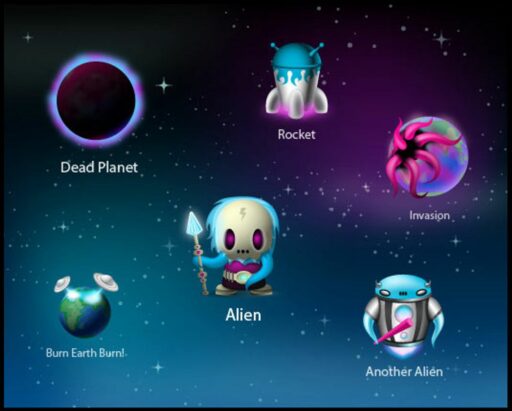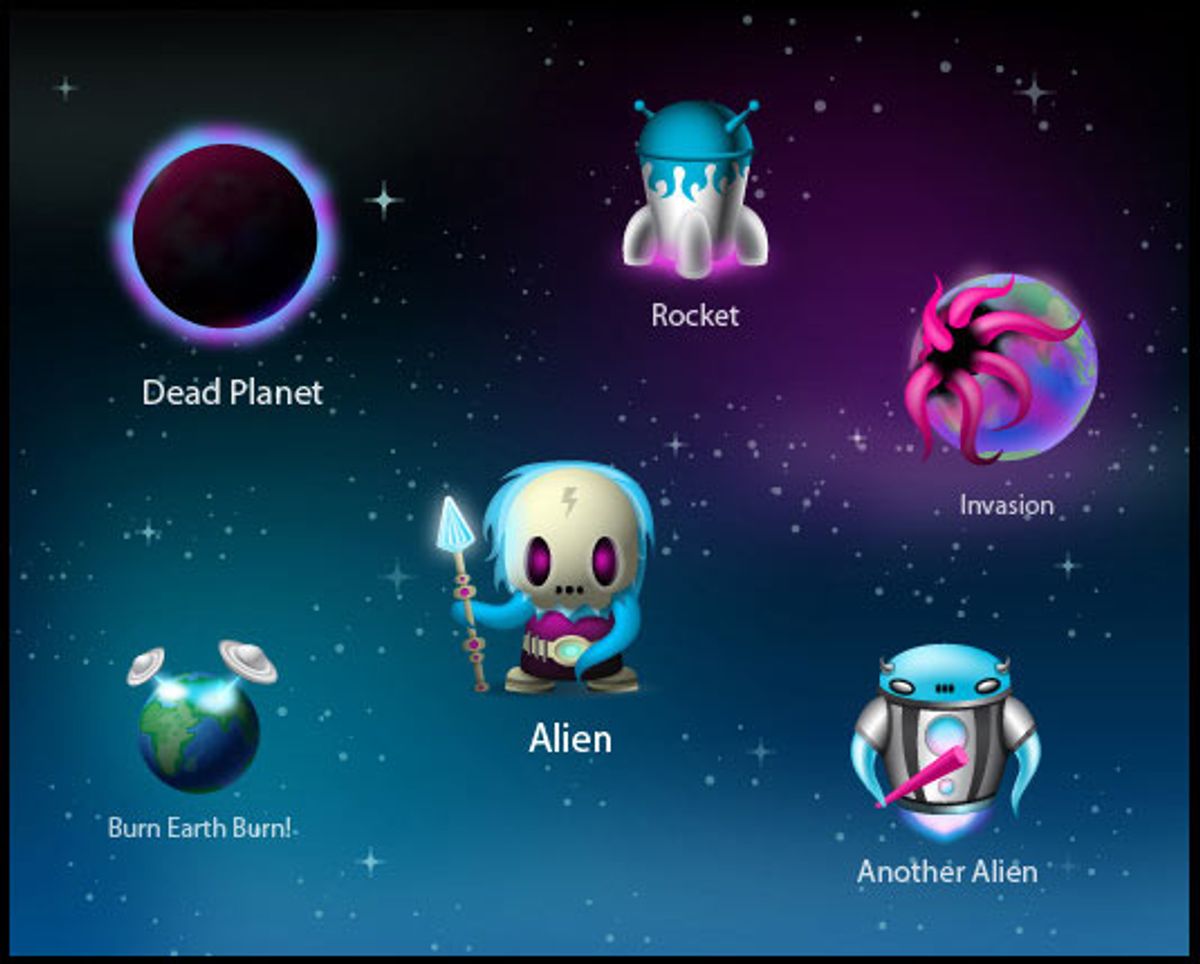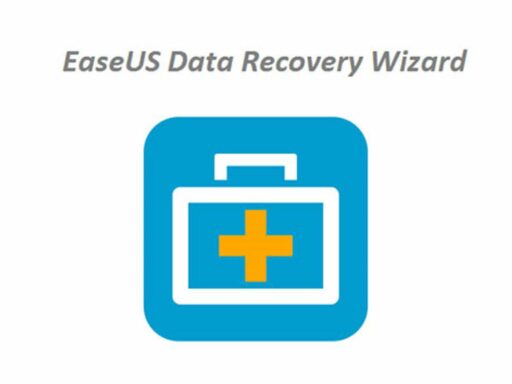Table of Contents
In the digital age, data visualization has transcended beyond mere representation of figures; it has become a storytelling device that captivates and informs. This article delves into the art and science of data visualization, exploring how data icons and visualizations play a crucial role in making complex information accessible and engaging. We will unravel the intricacies of visualizing information and how it can be leveraged to create impactful narratives in a world inundated with data.
Key Takeaways
- Data visualization is a transformative process that converts raw data into visual stories, enhancing comprehension and engagement.
- Effective data visualization leverages design principles, color theory, and interactivity to reveal patterns and insights in data.
- Interactive data visualizations democratize information, allowing users to explore data in a more meaningful way.
- Data icons and symbols distill complex information into intuitive visuals, facilitating quicker understanding and retention.
- The aesthetics of data visualization balance beauty with functionality, influencing how data is perceived and acted upon.
The Art and Science of Data Visualization

The Evolution of Visual Data Representation
The journey of data visualization is a testament to human ingenuity, tracing back to the dawn of civilization with primitive cave paintings and evolving into the complex digital graphics of today. The 1970s marked a significant turning point with the advent of computer graphics, propelling the field into a new era of accessibility and efficiency.
In the 1980s and 1990s, the birth of data visualization software revolutionized the practice. Tools from companies like Tableau, SAS, and Microsoft democratized the creation of visualizations, offering user-friendly interfaces and a range of templates. This era saw a shift towards empowering non-technical users to craft their own visual stories from raw data.
The historical context of data visualization highlights its progression from rudimentary representations to sophisticated interactive visualizations, underscoring its growing importance in our data-rich world.
As we look to the future, the role of data visualization is only set to expand, becoming an indispensable tool in making sense of the ever-increasing volumes of data. The table below outlines key milestones in the evolution of data visualization:
| Era | Milestone | Impact |
|---|---|---|
| 1970s | Emergence of Computer Graphics | Enhanced accessibility and efficiency |
| 1980s-1990s | Development of Visualization Software | Democratization of data visualization |
| 21st Century | Age of Big Data | Increased need for sophisticated tools |
Key Principles of Effective Data Visualization
Effective data visualization is an art that balances simplicity with detail, ensuring that the core message is conveyed without overwhelming the audience. Lean on visuals to distill complex concepts simply, and complement them with narratives that add depth and relatability. It’s crucial to choose the right kind of chart or visualization that aligns with the data type and the story you wish to tell.
When presenting data insights, aim for a balance in data presentation. This means avoiding oversimplification with basic charts, as well as steering clear of overly complex visuals that may confuse rather than clarify.
Here are some key principles to consider:
- Determine your audience and tailor the visualization to their needs and understanding.
- Ensure the data selected is relevant, accurate, and reliable.
- Simplify your visualizations to make them accessible, but not at the expense of necessary detail.
- Use design elements like color, fonts, and layout strategically to enhance comprehension.
- Incorporate interactivity to allow users to engage with the data and discover personalized insights.
The Role of Color, Shape, and Pattern in Data Interpretation
The interplay of color, shape, and pattern is fundamental in the realm of data visualization. Color serves as a powerful tool to differentiate and highlight key data points, but its selection must be done with care. Neutral color charts are often subtle and unobtrusive, providing a harmonious backdrop that allows data to stand out without visual conflict.
When considering the use of shapes and patterns, simplicity and consistency are key. These elements should aid in the interpretation of data without causing confusion or misinterpretation. For instance, a consistent shape can represent a particular category across different visualizations, aiding in quick recognition and comparison.
The strategic use of visual elements can significantly enhance the readability and effectiveness of data visualizations.
Here are some guidelines to consider when incorporating these elements into your data visualizations:
- Use contrasting colors to emphasize important data points.
- Select shapes that are easily distinguishable from one another.
- Implement patterns sparingly to avoid visual clutter.
- Ensure accessibility by choosing color palettes that are colorblind friendly.
By adhering to these principles, designers can create visualizations that are not only informative but also aesthetically pleasing, striking the right balance between beauty and functionality.
Data Visualization for Impactful Storytelling

Crafting Narratives with Data
Collecting and collating data can often feel one-dimensional, lacking the context, emotion, and humanity that make stories resonate. Storytelling infuses data with empathy, bridging the gap between raw information and meaningful interpretation. A skilled data storyteller weaves selected data into narratives that can inform, inspire, or incite action, making the story more relatable and creating an emotional connection with the audience.
By contextualizing data within a narrative framework, we can transform numbers and statistics into stories that engage the audience on a deeper, more emotional level.
Here are some techniques to craft compelling narratives with data:
- Employing personas with fictional biographies to represent customer segments
- Illustrating challenges through a typical user’s journey
- Developing case studies that explore customer challenges and triumphs
- Creating journey maps with narrative arcs to depict user experiences
- Compiling "Year-in-the-life" stories to showcase annual milestones
Use visuals effectively to enhance the story, ensuring they complement the narrative rather than distract from it. Practice incorporating storytelling techniques into your data visualizations to engage and captivate your audience.
Case Studies: Data Visualization in Action
Real-world examples offer invaluable insights into the transformative power of data visualization. The ‘Gapminder World’ visualization by Hans Rosling stands out for its dynamic portrayal of global development trends, challenging widespread misconceptions about poverty and health through animated bubble charts. Similarly, ‘Snow Fall’ by The New York Times masterfully wove together text, images, and interactive elements to narrate the harrowing tale of a ski avalanche, setting a new standard for multimedia storytelling.
Data visualizations have the unique ability to not only inform but also to engage and inspire action. They serve as powerful tools for journalists seeking to amplify marginalized voices and advocate for social change.
Another compelling case is the use of data visualizations to combat misinformation and foster transparency. By transforming complex datasets into visual narratives, journalists provide clarity amidst the often overwhelming flood of information, guiding readers to informed conclusions.
| Case Study | Focus Area | Impact |
|---|---|---|
| Gapminder World | Global Development | Debunked Myths |
| Snow Fall | Multimedia Storytelling | Set Industry Standards |
| Social Change Advocacy | Journalism & Activism | Promoted Transparency |
Measuring the Impact of Data Visualizations
The efficacy of data visualizations is not just in their aesthetic appeal but in their ability to convey information and prompt action. Organizations and individuals leverage visualizations to communicate complex data succinctly, driving awareness and change. To measure the impact of these visualizations, several metrics can be considered:
- Engagement: Time spent, interactions, and social shares
- Comprehension: Accuracy of information recall
- Decision-making: Influence on choices and outcomes
- Awareness: Reach and increase in topic recognition
The true test of a data visualization’s impact lies in its capacity to transform viewers into informed decision-makers.
Controversies such as the tension between simplification and accuracy, or impact versus engagement, highlight the delicate balance needed in creating effective visualizations. A study by the Wharton School of Business suggests that visualizations can enhance decision-making by up to 20%, underscoring their potential for significant impact. As the digital landscape evolves, the role of data visualization in storytelling and persuasion continues to grow, making the measurement of its impact an ever more critical endeavor.
Interactive Data Visualizations: Engaging the Audience

The Rise of Interactive and Dynamic Visuals
In the digital age, the shift towards interactive visualizations marks a significant evolution in the way we understand and engage with data. Unlike static visuals, these dynamic representations invite users to delve into datasets, offering a hands-on experience that can reveal intricate details and patterns. Interactive elements such as tooltips, filters, and animations enrich the narrative, transforming passive viewers into active participants in the storytelling process.
- Interactive visualizations encourage exploration and personal discovery.
- They can adapt to user input, providing tailored insights.
- Dynamic visuals often include real-time data, keeping the information current.
By enabling a more immersive experience, interactive visualizations foster a deeper connection between the data and the audience, enhancing both comprehension and retention.
The New York Times’ "The Upshot" exemplifies the power of interactivity by using such techniques to clarify complex issues like election outcomes and economic shifts. The result is a more informed and engaged public, capable of drawing independent conclusions from the presented data.
Tools and Technologies for Interactive Data
The landscape of data visualization tools and technologies is rich and varied, catering to a diverse range of needs and expertise levels. For those looking to dive into the creation of interactive data visualizations, here are some of the most widely used tools:
- Tableau: Renowned for its user-friendly interface and powerful visualization capabilities.
- Power BI: A Microsoft product that integrates seamlessly with other MS services.
- R: A programming language favored for statistical analysis and graphical representations.
- Python: Known for its versatility and the extensive libraries available for data science, such as Matplotlib and Seaborn.
Each tool offers unique features that can help turn raw data into dynamic and engaging visual stories. It’s crucial to select the right tool that aligns with the project’s goals and the user’s skill set.
Interactive visualizations have revolutionized the way we understand and interact with data. They enable a more profound engagement by allowing users to manipulate variables, drill down into specifics, and view data from multiple perspectives. As we continue to embrace digital platforms, the importance of these tools in making data accessible and understandable cannot be overstated.
Best Practices for Creating User-Friendly Data Interactives
Creating user-friendly data interactives is essential for engaging and empowering audiences. Interactivity is key to engaging audiences with data visualizations, allowing them to explore and manipulate the data to uncover insights that are relevant to them. To achieve this, consider the following best practices:
- Simplicity: Start with a clear and simple design that makes the data accessible to all users, regardless of their expertise.
- Intuitiveness: Ensure that interactive elements like tooltips and filters are intuitive and easy to use.
- Responsiveness: Design your visualizations to be responsive across different devices and screen sizes.
- Accessibility: Make sure that your data visualizations are accessible to users with disabilities.
By focusing on the user experience, data visualizations can become powerful tools for storytelling and analysis. They should enable users to interact with the data in meaningful ways, without overwhelming them with complexity.
Remember, the goal is to create an environment where data is not just seen but experienced. By incorporating elements such as animations and dynamic filters, you can guide your audience through the data narrative and encourage active exploration.
Data Icons and Symbols: Simplifying Complex Information

The Power of Icons in Data Communication
Icons serve as a bridge between complex data and the audience, transforming abstract numbers into relatable visuals. Icons can encapsulate concepts, making them instantly recognizable and reducing cognitive load. They are particularly effective in dashboards and infographics, where space is at a premium and clarity is crucial.
- Icons can represent actions, objects, or ideas, enhancing comprehension.
- They facilitate cross-cultural communication, transcending language barriers.
- In user interfaces, icons guide users, providing intuitive navigation cues.
The strategic use of icons in data visualization can significantly amplify the message, ensuring that key insights are not only seen but also remembered.
While icons are powerful, they must be used judiciously. An overload of symbols can lead to confusion rather than clarity. It’s essential to strike a balance, ensuring each icon is purposeful and contributes to the overall understanding of the data.
Designing Intuitive Icons for Data Representation
In the realm of data visualization, the creation of icons that are both intuitive and representative is a delicate balance of art and science. Designing icons that users can instantly recognize and understand is crucial for effective communication. Icons serve as visual shorthand, allowing for quick comprehension in a landscape where time and clarity are of the essence.
To achieve this, designers must distill complexity into intuitive symbolism, a process that involves stripping down an idea to its most basic visual elements without losing its essence. This simplification is guided by certain principles:
- Simplicity: The icon should be as simple as possible while still conveying the intended meaning.
- Clarity: It should be immediately clear and not require explanation.
- Consistency: Icons used within the same set should have a consistent visual language.
- Recognition: The icon should be easily recognizable and distinguishable from others.
The power of an icon lies in its ability to convey a complex idea with a single, simple image. This is the heart of intuitive design.
When these principles are applied effectively, the result is a set of icons that enhance the user’s ability to navigate and understand complex data with ease. The ultimate goal is to create a visual language that is universally understood, transcending language barriers and enhancing the overall user experience.
Integrating Icons with Data for Enhanced Clarity
In the realm of data visualization, the integration of icons with data sets serves as a bridge between complex information and the audience’s understanding. Icons act as visual shorthand, translating intricate data into accessible and memorable imagery. This simplification is crucial for viewers to quickly grasp the essence of the data without being overwhelmed by details.
- Focusing visuals on key metrics and insights, removing unnecessary details that distract from the main point
- Designing clear and intuitive visuals that are easy for audiences to understand
- Using appropriate chart types based on the data (such as time series data for line charts)
- Formatting visuals for easy consumption, highlighting important data points and trends
- Including descriptive titles and labels so the image is understandable on its own
The effective use of icons in data visualization not only enhances the clarity of the information presented but also enriches the storytelling aspect of the data. It is a delicate balance between aesthetic appeal and functional precision that, when achieved, can make data speak volumes more than numbers alone could convey.
The table below exemplifies how icons can be integrated with quantitative data to provide a clear and concise overview:
| Metric | Description | Icon Representation |
|---|---|---|
| Revenue Growth | Percentage increase in revenue | 💹 |
| Customer Satisfaction | Survey results indicating satisfaction level | 😀 |
| Operational Efficiency | Ratio of output to input | ⚙️ |
The Aesthetics of Data: Presenting Information Beautifully

Balancing Beauty and Functionality in Data Design
In the realm of data visualization, the challenge often lies in the delicate balance between aesthetic appeal and functional clarity. The primary goal is to convey information effectively, without letting the allure of design overshadow the data’s message.
While it’s true that humans are innately visual creatures, drawn to compelling and attractive presentations, the utility of a visualization must always take precedence. A beautiful chart that fails to communicate its intended insight is merely a piece of art, not a tool of understanding.
The artistry in data design should not compromise the ease of comprehension. It is essential that visualizations remain intuitive and accessible to their audience.
To illustrate this balance, consider the following aspects of data design:
- Contrast and Color: Utilizing contrasting colors to draw attention to key data points.
- Typography: Choosing readable fonts that complement the data without distracting.
- Layout: Arranging elements in a clean, uncluttered manner to facilitate information absorption.
These elements, when harmonized, create visualizations that are both informative and engaging, ensuring that the story within the data is neither lost nor misunderstood.
The Influence of Aesthetics on Data Comprehension
The aesthetics of data visualization play a crucial role in how information is perceived and understood. A well-designed visualization not only conveys data but also engages the viewer, making complex information more accessible. The balance between aesthetic appeal and clarity is vital; too much embellishment can obscure the data, while too little can fail to draw attention.
The challenge lies in creating visuals that are both appealing and informative, without compromising the integrity of the data.
Aesthetic choices in color, typography, and layout can significantly influence comprehension. For instance, certain colors can highlight trends and patterns, while others may distract or mislead. Similarly, the use of typography and spacing can aid in the hierarchy of information, guiding the viewer’s eye through the data narrative.
- Use of color to highlight key data
- Typography that facilitates reading and understanding
- Layout that guides the viewer’s eye
- Balance between embellishment and clarity
Ultimately, the goal is to present data in a way that is both beautiful and functional, enhancing the viewer’s ability to digest and retain the information presented.
Innovative Approaches to Data Aesthetics
In the quest to present data not just accurately but also beautifully, innovators in data visualization are constantly pushing boundaries. These pioneers understand that aesthetics can play a crucial role in how data is perceived and comprehended. By exploring new visual formats and experimenting with design elements, they seek to create visualizations that are not only informative but also engaging and memorable.
- Inspiring and innovating: Users can be inspired and innovated by data visualization.
- Unexpected insights: New insights are revealed through innovative visualizations.
- Engagement through aesthetics: Aesthetics can significantly enhance user engagement.
The balance between aesthetic appeal and the clarity of information is a delicate dance. Striking the right chord can transform a simple chart into a compelling narrative that resonates with the audience.
As we move forward, the integration of technology and design principles is likely to yield even more sophisticated and intuitive data visualizations. The challenge for designers is to ensure that these new methods enhance, rather than obscure, the message the data is intended to convey.
Conclusion: Harnessing the Power of Data Visualization
In the digital age, data visualization stands as a beacon of clarity in the sea of information. It is not merely about presenting data; it’s about telling a story that resonates with audiences, simplifying complex concepts, and driving meaningful insights. This article has explored the transformative power of data icons and visualizations, from enhancing decision-making to democratizing data for the public. As we continue to navigate vast data landscapes, the art and science of data visualization will remain an indispensable tool. It is our bridge between raw data and actionable knowledge, turning numbers into narratives and statistics into stories that can inform, inspire, and instigate change.
Frequently Asked Questions
What is data visualization and why is it important?
Data visualization is the process of presenting data in a visual format, such as charts, graphs, and maps, to help people understand complex information more easily. It is important because it turns raw data into visual stories that can reveal patterns, trends, and insights, making information more accessible and memorable.
How has data visualization evolved over time?
Data visualization has evolved from simple charts and graphs to complex interactive visualizations. With advancements in technology, visualizations have become more dynamic, allowing for real-time data interaction and more sophisticated storytelling techniques.
What are the key principles of effective data visualization?
Effective data visualization is based on clarity, accuracy, efficiency, and aesthetics. It should present information in a way that is easy to understand and interpret, while also being visually engaging to capture the audience’s attention.
How do color, shape, and pattern contribute to data interpretation?
Color, shape, and pattern are visual elements that help to differentiate data points, encode information, and guide the viewer’s eye. They can highlight important data, indicate relationships, and convey meanings that enhance the overall understanding of the data.
What role do data icons play in data visualization?
Data icons and symbols simplify complex information and make visual representations more intuitive. They serve as visual shorthand for concepts and categories, helping viewers to quickly grasp the meaning behind the data.
How can aesthetics improve data comprehension?
Aesthetics play a critical role in data visualization by balancing beauty and functionality. A well-designed visualization not only conveys data effectively but also engages the viewer emotionally, encouraging deeper exploration and understanding of the information presented.





